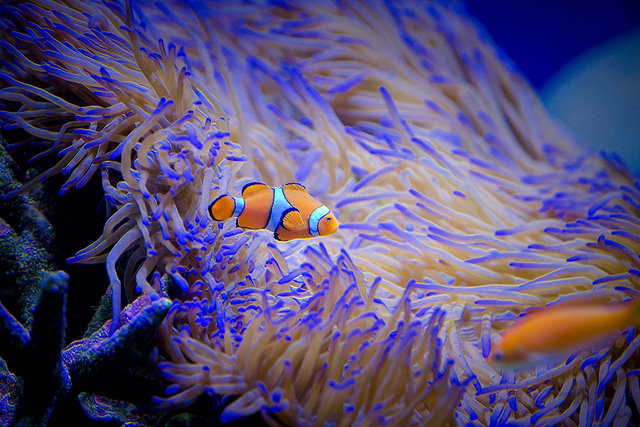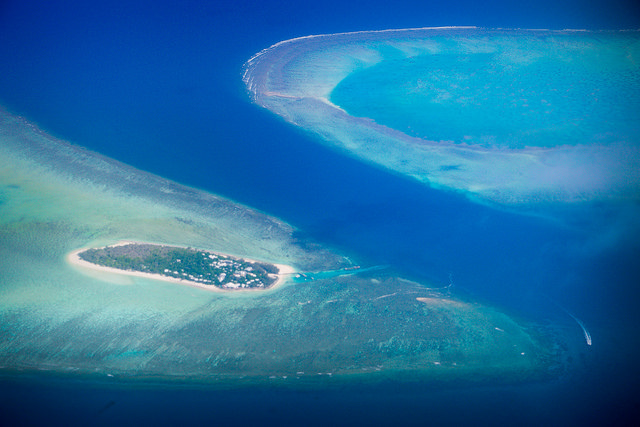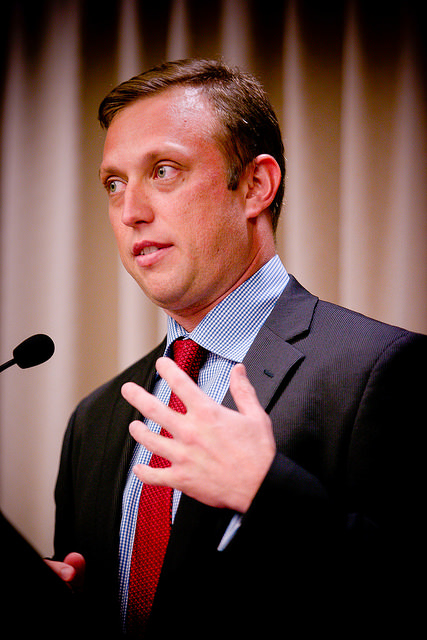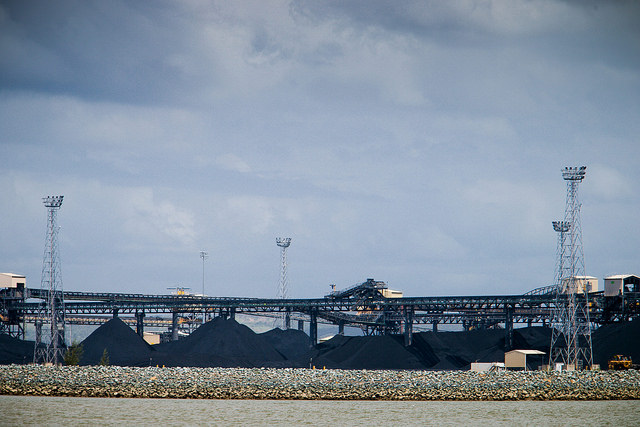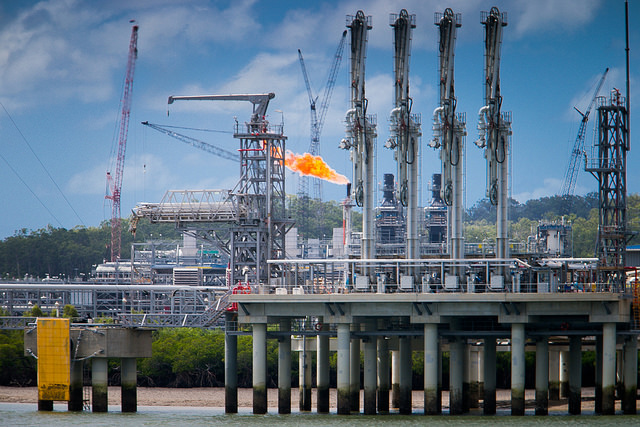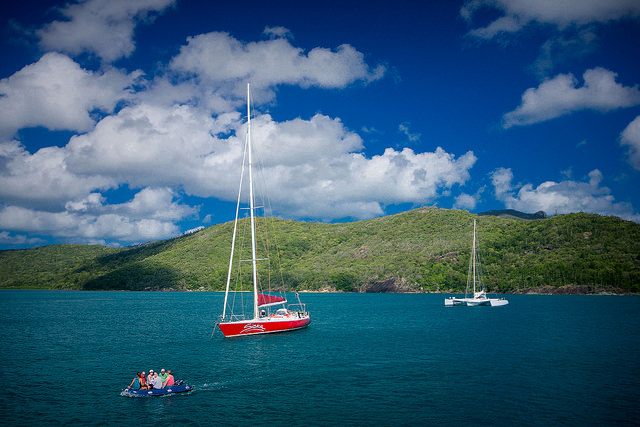For decades, the Great Barrier Reef enjoyed its World Heritage status. Now under pressure, what awaits the world’s most important reef system should UNESCO decide to classify it as “in danger”?
The Great Barrier Reef (GBR) which stretches for about 2,000 kilometers off northeast Australia’s Queensland coast, is one of the world’s most diverse and remarkable ecosystems, with a wide range of marine habitats and many thousands of different species. In fact it was added to the World Heritage list in 1981. But over the last 30 years, it has lost half of its coral cover prompting concern from the United Nations Educational, Scientific and Cultural Organization (UNESCO) last year with a threat to downgrade the Reef to the World Heritage ‘in danger’ list.
UNESCO’s concerns are focused on a number of natural pressures, including cyclones, crown-of-thorns starfish outbreak that kills the corals, bleaching from ocean warming and sudden large influxes of freshwater from extreme weather events. As well as a range of human uses such as tourism, shipping and coastal developments including ports and liquefied natural gas facilities.
What then will be the fate of the GBR comes June 2015 when the 38th session of the UN World Heritage Committee (UNWHC) decides on whether to include it on the “in danger” list or give Australia the chance to reverse the deteriorating reef areas?
———–
(2nd of three parts)
Imelda Abano toured the Great Barrier Reef in Queesland as part of the Australian government’s International Media Visit program last month. Here is the second part of her report.
————
The Queensland Government acknowledges that the reef is facing significant challenges and said it seriously takes on addressing the ongoing impacts to the reef from climate change, ocean acidification, coastal development and water quality.
“ There is a whole package of initiatives that the new government is putting in place and we are conscious that not only are the health and future of the reef is at stake but also its status as a World Heritage Area,” said Steven Miles, Minister for National Parks and the Great Barrier Reef.
Last month, Miles and Prime Minister Tony Abbot launched the Reef 2050 Long-Term Sustainability Plan to satisfy the key recommendations made by the UNWHC to avoid the Reef being declared “in danger” by UNESCO.
The long-term plan includes:
- a ban on sea dumping of capital dredge spoil within the GBR World Heritage Area’
- prohibiting capital dredging for the development of new or expansion of existing port facilities to within the regulated port limits of Gladstone, Hay-Point Mackay, Abbot Point and Townsville;
- enhanced ship safety and environmental protection;
- halted and reversed the decline in water quality entering the Reef from agriculture—80 percent reduction in nitrogen and 50 percent cut in sediment by 2025;
- extra protection to turtles and dugongs through tough new laws against poaching;
- investing about $2 billion Australian dollars for research and management activities in the coming decade;
- $100 million Australian dollars over five years towards improving water quality, scientific research
“ I believe UNESCO will give us a time to implement our new plans and commitments. We don’t think the Reef is in danger now,” Miles stressed.
Of reefs, coal and climate change
Queensland is Australia’s top coal-producing state. The scale of mining operation there is striking and growing. The industry invests around $40 billion Australian dollars a year, providing thousands of jobs.
Greenpeace Australia campaigner Jessica Panegyres criticized the Reef 2050 plan of the government which is designed to conserve and save the Great Barrier Reef, saying that the plan “barely deals with climate change and allows for massive coal port expansions.”
“ The plan is playing lip service to Reef protection rather than committing to the necessary interventions. This is disappointing but hardly surprising given Tony Abbot’s track record on environmental protection and climate change,” Panegyres said in a statement. “ Unfortunately, the Australian government is choosing new coal mines and coal ports, rather than a healthy Reef that supports thousands of jobs and a thriving tourism industry.”
Greenpeace alleged that in 2014, the Australian Government has approved one of the largest coal mines, Carmichael mega-mine which plans to export 40 million tonnes per year of thermal coal from the Galilee Basin to India via the port of Abbot Point on the Great Barrier Reef coast. When burnt, the Greenpeace added, coal from the Carmichael mine will produce 128.4 million tonnes of carbon emissions per year at peak production.
Presently, there are 12 ports in the Reef World Heritage Area, including these mega ports: Gladstone, Fitzroy Delta and Balaclava Island, Dudgeon Point, Abbot Point, Cape York and Townsville.
Craig Doyle, Chief Executive Officer of the world’s fourth largest coal export terminal, the Gladstone Ports Corporation, said that while they intend to increase their coal production in the coming years, they have allocated over $5 million Australian dollars will be invested in the next eight years to fund projects such as on improving the resilience of coral habitats; code of best netting practice; threatened and migratory species and habitat education and awareness program; and water quality improvement.
“ We have been conducting monitoring activities in the past years to ensure the sustainable use of our harbor and the responsible management of industrial development and our environment,” Doyle said.
Minister for the Environment Greg Hunt, however, stressed that the Australian Government and Queensland Governments are placing a permanent ban on the disposal of dredge materials in both the GBR Marine Park and the World Heritage Area from capital dredging project.
“ This significant step forward is just one element of a much wider suite of measures we’re putting in place to give greater legal protection to the Reef than any government before us,” Hunt said. “ Improving the GBR’s health and resilience requires governments and the community to work together to ensure the Reef remains one of the most biologically diverse places on Earth.”
Hunt added that putting the GBR in the “in danger” list would be a major blow to Australia’s economy, environmental reputation and tourism.
Reef and tourism
Tourism is one of great economic importance to Australia with its significant areas of coral reef. The Great Barrier Reef is the world’s largest living thing visited by around two million tourists every year.
It supports a range of tourism and other activities worth $6 billion Australian dollars a year to the nation’s economy and supports about 69,000 jobs, according to Tourism Australia.
A mainland beach was the most common recent destination for coastal residents, but 68 percent had also visited reefs and islands. Magnetic Island and the Whitsundays are among the favorite destinations of people of the GBR.
Some of the popular ways to experience the GBR include: scuba diving, snorkeling, cruising, sailing, island resorts and scenic flight.
Massive influxes of tourists, however, have a huge impact. They contribute to the pollution, waste and water needs of the local population, as well as disturbance to marine animals like the green turtles, whale sharks, seals, dugongs, dolphins and birds.
Great Barrier Reef Marine Park Authority Chairman Russell Reichelt said the GBRMPA and the Department of Environment and Resource Management, however, have management tools and processes that allow tourism to occur with minimal impact on the marine environment, ensuring the diversity, integrity and productivity of the Reef.
“ The great barrier reef is one of the world’s best managed reefs. The reef is vitally important to communities and industries that depend on a healthy reef for livelihood, recreation and tourism,” Reichelt said.
Karen Halbert, executive general manager of the Tourism Australia said sustainable tourism contributes to Australia’s economy, generation of employment and business opportunities.
“ Sustainable and efficient environmental management of tourism facilities can decrease the environmental ipact at the Great Barrier Reef. We have in place sustainable tourism development strategies to prevent damage and deterioration of the Reef. Improvement of environmental education is another,” Halbert said.
What next?
For now, the Australian government is scrambling to implement a number of its plans for the management and conservation of the reef as it awaits the June meeting and deliberation of the UNESCO World Heritage Committee in Bonn, Germany to whether or not to downgrade the GBR into the “in danger” list.
“ The Great Barrier Reef is a priceless natural asset for the world. But for Australians, it’s much more than this. It was a stage for important events in our nation’s history, and today its incomparable natural beauty feeds our national pride. It’s certainly not too late to conserve and protect it,” said Department of the Environment Gordon de Brouwer.
Photo credit: DFAT/Patrick Hamilton

